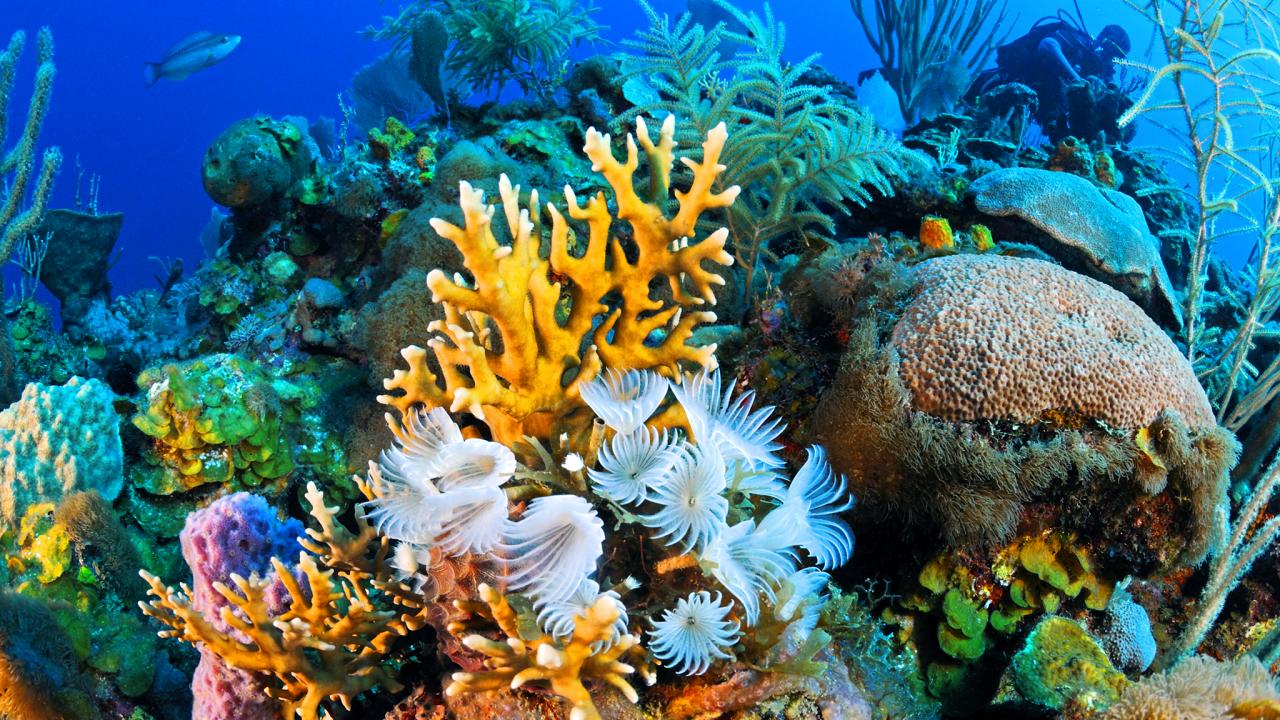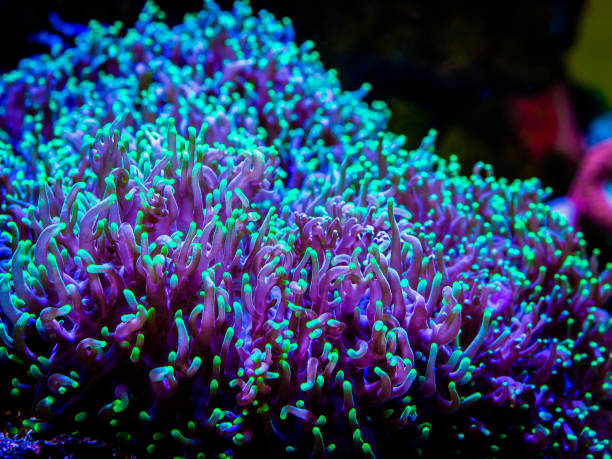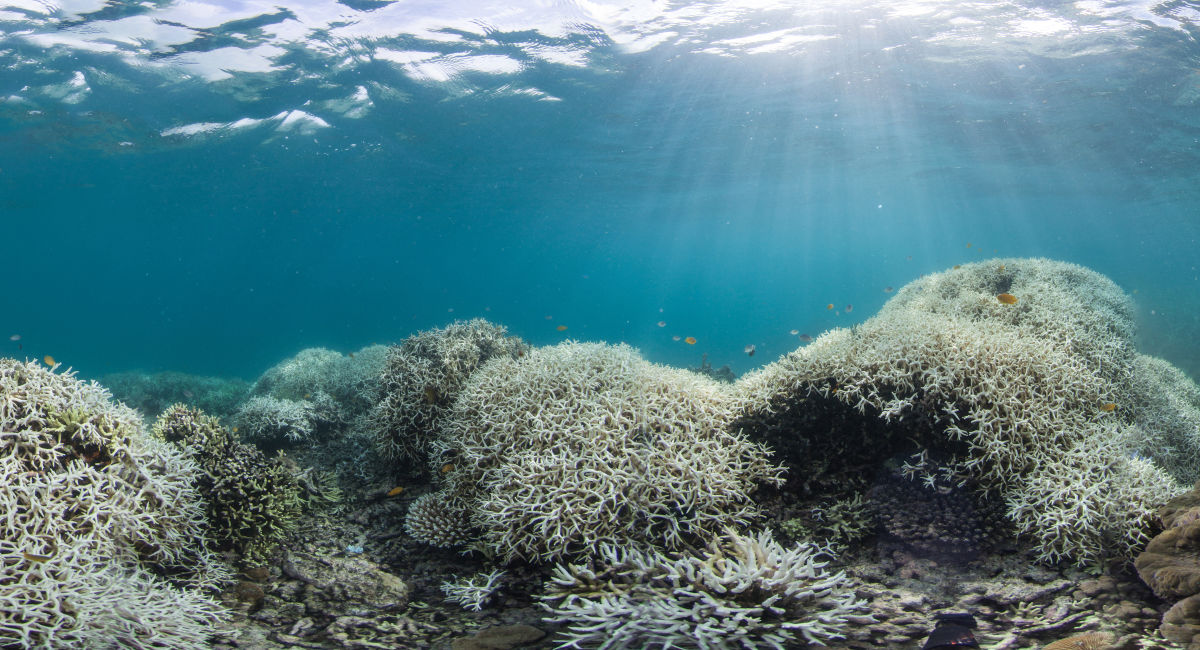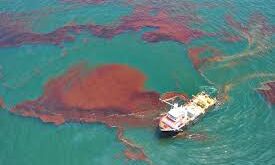GS Paper III – Environment & Ecology :
Biodiversity: Coral reefs are hotspots of marine biodiversity. Coral bleaching disrupts these ecosystems, leading to species decline.
Climate Change: Rising sea temperatures due to climate change are the primary cause of coral bleaching.
Conservation: Understanding the threats to coral reefs and discussing conservation strategies like Marine Protected Areas (MPAs) are relevant.
Why in news ?
The ICAR-Central Marine Fisheries Research Institute (CMFRI) has found that coral reefs in the Lakshadweep Sea have undergone severe bleaching due to prolonged marine heatwaves since October 2023.
What are Coral Reefs ?

Corals are sessile animals, i.e. they permanently attach themselves to the ocean floor.
These stonly coral skeletons, over thousands and millions of years, form complex coral reefs, which have often been referred to as “rainforests of the sea” — home to thousands of marine species, and vibrant ecosystems.
They are classified as either ‘hard’ or ‘soft’.
Hard Corals:

Structure: The key feature of hard corals is their rigid external skeleton made of calcium carbonate. This hard, stony casing gives them their name.
Reef Builders: Hard corals, also known as stony corals or scleractinian corals, are the primary architects of coral reefs. Colonies of hard corals, consisting of many tiny polyps, grow together and their skeletons create the foundation of reefs.
Symbiotic Relationship: Most hard corals have a symbiotic relationship with microscopic algae called zooxanthellae living inside their tissues. The algae use sunlight to produce energy (photosynthesis) and share some of it with the coral, while the coral provides the algae with shelter and nutrients. This partnership helps corals thrive.
Examples: Staghorn coral, brain coral, elkhorn coral.
Soft Corals:

Structure: Soft corals lack the hard, calcium carbonate skeleton of their hard counterparts. Instead, they have a flexible internal skeleton made of protein fibers and tiny, sharp structures called sclerites for support. They may feel leathery or fleshy to the touch.
Not Reef Builders: Soft corals don’t build reefs themselves, but they are abundant and add to the diversity of coral reef ecosystems.
Feeding: While some soft corals have zooxanthellae, they obtain most of their nutrients by filtering plankton and other tiny organisms from the water with their tentacles.
Appearance: Soft corals come in a wider variety of shapes and forms compared to hard corals. They can be feathery, fan-like, finger-like, or lumpy, and often have vibrant colors.
Examples: Sea fans, sea whips, leather corals, pulsing xenia.
What is coral bleaching?

Coral bleaching takes place when the water is too warm. In such conditions, corals expel the microscopic algae which live in their tissues, and, in simple terms, produce food for them.
Without these algae, corals’ tissues become transparent, exposing their white skeleton. This is called coral bleaching. Bleached corals are not dead, but run the risk of starvation and disease. According to experts, without their algae, corals can survive for about two weeks.
Coral bleaching in Lakshadweep

Almost all of Lakshadweep’s islands are coral atolls, with their soil largely derived from corals, and extant coral reefs around them.
While Lakshadweep has been gripped by marine heat waves since October 2023, coral bleaching was spotted only last week. If the water does not cool down, the bleaching can eventually lead to the death of Lakshwadeep’s corals.
Lakshadweep Sea has previously seen coral bleaching events in 1998, 2010 and 2015, but the scale of the current one is unprecedented.
Corals experience thermal stress when sea surface temperatures exceed 1 degree celsius above the maximum mean temperature. This stress worsens if the high temperatures persist over a period of time.
Calculating Thermal Stress in corals
Scientists use the Degree Heating Week (DHW) indicator to measure accumulated heat stress in an area over the past 12 weeks, by adding up any temperature that exceeds the bleaching threshold during that time period. This is calculated in celsius-weeks.
DHW values above 4 degree celsius-weeks cause significant coral bleaching — a threshold that Lakshadweep has now crossed, CMFRI found. However, Lakshadweep Sea has been consistently experiencing temperatures 1 degree celsius above the norm since October 27, 2023.
Apart from excessive atmospheric heat (caused due to Global Warming), shifts in ocean currents also lead to unusually high water temperatures.
Indian Ocean Heatwaves

Studies confirm that reported a significant increase in marine heatwaves, due to the rapid warming in the Indian Ocean and strong El Niños. Earlier, these heat waves used to be rare in the tropical Indian Ocean, but have now become an annual affair.
During 1982–2018, the western Indian Ocean had a total of 66 heatwave events while the Bay of Bengal had 94 heatwave events. An underwater survey showed that 85% of the corals in the Gulf of Mannar near the Tamil Nadu coast got bleached after the marine heatwave in May 2020.
Impacts of Coral Bleaching:
Loss of Biodiversity: Coral reefs support diverse marine life. Bleaching damages reefs, leading to loss of habitat and species decline.
Reduced Coastal Protection: Healthy reefs buffer shorelines from waves and storms. Bleached reefs offer less protection, increasing coastal vulnerability.
Impact on Fisheries: Coral reefs are vital for fish breeding and feeding grounds. Bleaching harms fish populations, affecting fisheries and livelihoods.
Economic Damage: Tourism and recreation heavily rely on healthy reefs. Bleaching damages these industries.
Government Initiatives in India:
National Coral Reef Management Programme.
Monitoring coral health.
Marine Protected Areas (MPAs) to conserve reefs.
Promoting sustainable fishing practices.
Research on coral restoration techniques.
 Chinmaya IAS Academy – Current Affairs Chinmaya IAS Academy – Current Affairs
Chinmaya IAS Academy – Current Affairs Chinmaya IAS Academy – Current Affairs

